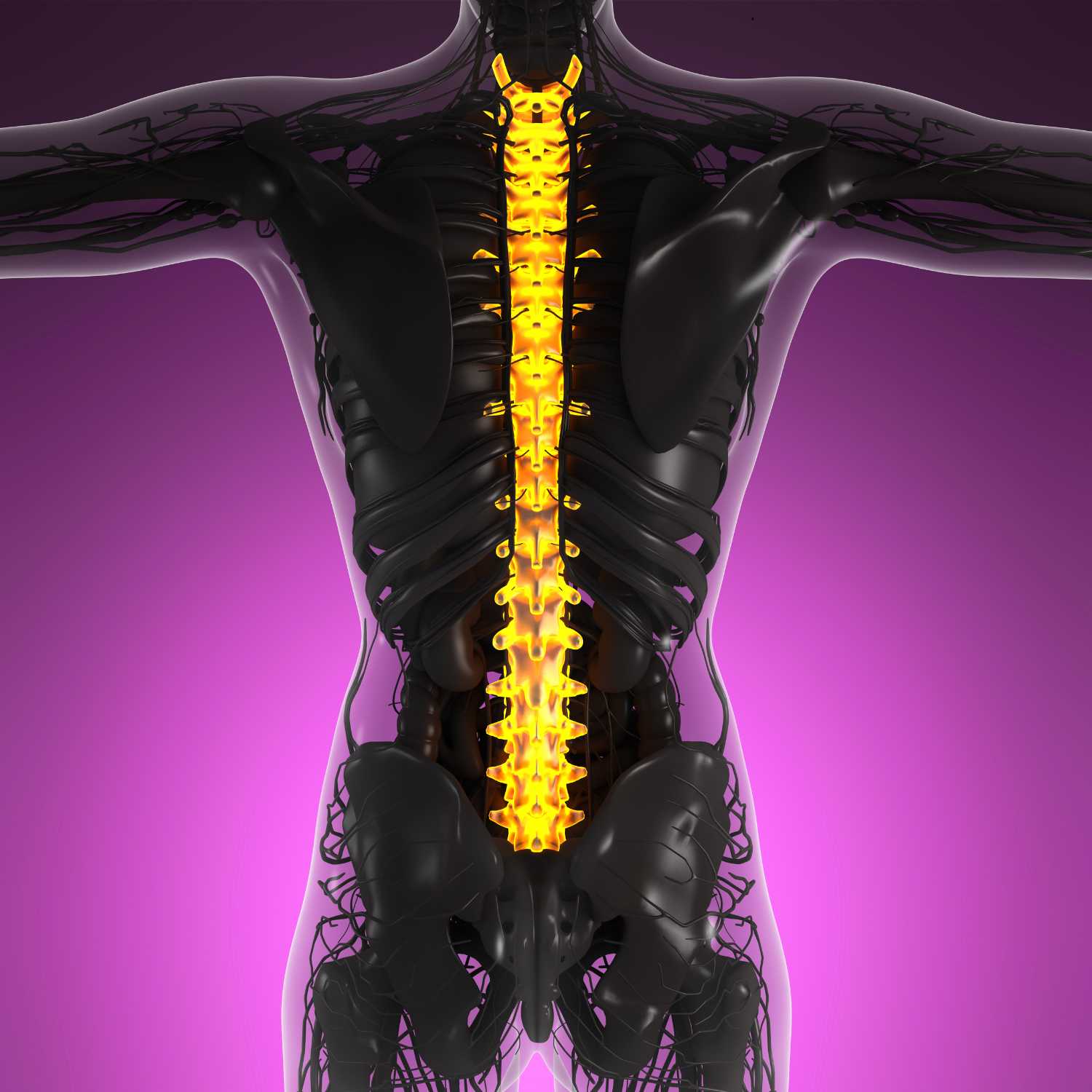Minimally Invasive Spine Surgery: Understanding Your Candidacy

Dealing with persistent back or neck pain can be incredibly disruptive to daily life. For many, traditional non-surgical treatments like physical therapy, medication, or injections offer relief. However, when these conservative approaches fall short, minimally invasive spine surgery (MISS) emerges as a promising option. This advanced surgical technique aims to address spinal issues with smaller incisions and less disruption to surrounding tissues, often leading to faster recovery and reduced post-operative pain. Understanding if you're a candidate for minimally invasive spine surgery involves a comprehensive evaluation of your specific condition, medical history, and overall health.
Who generally qualifies for minimally invasive spine surgery?
"Individuals who have persistent spinal pain or neurological symptoms from conditions like herniated discs, spinal stenosis, or degenerative disc disease that have not improved after at least three months of conservative treatments are generally considered candidates for minimally invasive spine surgery."
Minimally invasive spine surgery is typically considered for patients who have exhausted non-surgical options and continue to experience significant pain, numbness, weakness, or other debilitating symptoms related to their spinal condition. The goal of MISS is to alleviate pressure on nerves, stabilize the spine, or remove damaged tissue with minimal disruption to surrounding muscles and ligaments. This approach is preferred for many due to its potential benefits, but it's not universally suitable for all spinal problems or all patients.
What common spinal conditions can be treated with minimally invasive spine surgery?
"Common spinal conditions treated with minimally invasive spine surgery include herniated discs, spinal stenosis, degenerative disc disease, spondylolisthesis, and certain cases of spinal fractures or spinal tumors."
Minimally invasive spine surgery is effective for a range of conditions that cause spinal pain and neurological symptoms. For instance, a herniated disc, where the cushioning material between vertebrae bulges out and presses on nerves, can often be addressed with a minimally invasive discectomy. Spinal stenosis, a narrowing of the spinal canal that compresses the spinal cord or nerves, can be relieved through procedures like minimally invasive laminectomy or foraminotomy. Degenerative disc disease, which involves the wearing down of spinal discs over time, and spondylolisthesis, where one vertebra slips over another, can also be candidates for minimally invasive fusion techniques.
Are older patients suitable candidates for minimally invasive spine surgery?
"Yes, older patients are often suitable candidates for minimally invasive spine surgery due to the reduced physiological stress compared to traditional open surgery, making it a safer option for those who might be at higher risk with more extensive procedures."
Age alone is not typically a barrier to minimally invasive spine surgery. In fact, because MISS involves smaller incisions, less blood loss, and reduced trauma to muscles and tissues, it can be a particularly attractive option for older individuals or those with certain co-existing medical conditions who might not tolerate traditional open surgery as well. The less invasive nature often translates to a quicker recovery and a lower risk of complications, which is beneficial for the elderly population.
What role does overall health play in determining candidacy for MISS?
"Good overall health, including the absence of severe uncontrolled medical conditions such as uncontrolled diabetes, severe heart disease, or significant obesity, is crucial for being an ideal candidate for minimally invasive spine surgery."
While MISS is less invasive, a patient's general health is still a significant factor. Surgeons assess underlying health conditions to ensure the patient can safely undergo anesthesia and recover without major complications. Patients with well-managed chronic conditions are often still good candidates, but those with severe, unstable medical issues may face higher risks, making traditional open surgery or non-surgical management a more appropriate choice. A thorough pre-operative medical evaluation is always performed.
Can patients who have had previous spine surgery undergo minimally invasive procedures?
"Yes, in many cases, patients who have undergone previous open spine surgery can still be candidates for minimally invasive spine surgery to address new or recurring spinal issues, provided the condition is suitable for a minimally invasive approach."
Previous spine surgery does not automatically disqualify a patient from minimally invasive spine surgery. Advances in MISS techniques allow surgeons to navigate around scar tissue and address new problems effectively. However, the complexity of the prior surgery and the current spinal issue will be carefully assessed. In some instances, scar tissue from prior surgeries might make a minimally invasive approach more challenging, requiring a highly skilled and experienced surgeon.
How long should conservative treatments be tried before considering MISS?
"Conservative treatments for spinal pain, such as physical therapy, medication, and injections, should typically be attempted for at least three to six months without significant relief before minimally invasive spine surgery is considered."
The decision to proceed with minimally invasive spine surgery is usually made after a dedicated period of conservative management. This timeframe allows the body to potentially heal on its own and for the effectiveness of non-surgical interventions to be fully assessed. If symptoms persist and significantly impact a patient's quality of life despite these efforts, surgical options like MISS become more appropriate to explore.
What imaging studies are important for evaluating a candidate for MISS?
"Essential imaging studies for evaluating a candidate for minimally invasive spine surgery typically include MRI (Magnetic Resonance Imaging), CT scans (Computed Tomography), and X-rays to provide detailed views of the spinal structures and identify the source of the problem."
These imaging modalities are critical for a surgeon to accurately diagnose the spinal condition and plan the appropriate minimally invasive spine surgery. MRI is excellent for visualizing soft tissues like discs and nerves, while CT scans provide detailed images of bone structures. X-rays can show spinal alignment and instability. Sometimes, other specialized scans like discograms might be used to pinpoint the source of pain in specific cases.
Is obesity a factor in candidacy for minimally invasive spine surgery?
"While minimally invasive spine surgery may be more accessible for some obese patients compared to open surgery due to smaller incisions, significant obesity can still present challenges related to anesthesia, surgical access, and healing, requiring careful evaluation of the candidate for minimally invasive spine surgery."
Obesity can increase the complexity and risks of any surgery, including minimally invasive spine surgery. While MISS generally reduces the issues associated with large incisions in obese patients, factors like increased soft tissue thickness can make surgical access more difficult, and excess weight can impact healing and recovery. A surgeon will weigh these factors carefully when determining if an obese individual is a suitable candidate.
What kind of pain and symptoms indicate a need for MISS?
"Persistent, severe back or neck pain that radiates into the limbs (radiculopathy), numbness, tingling, or weakness that significantly impairs daily activities and has not responded to conservative treatments, often indicates a need for minimally invasive spine surgery."
The type and severity of symptoms are key indicators. Chronic pain that doesn't subside with rest or conservative therapies, especially if it's accompanied by neurological deficits like muscle weakness or foot drop, suggests nerve compression or spinal instability that might benefit from intervention. The pain's impact on quality of life and functional ability is also a major consideration when identifying a candidate for minimally invasive spine surgery.
What are the benefits of minimally invasive spine surgery for suitable candidates?
"For suitable candidates for minimally invasive spine surgery, benefits often include smaller incisions, reduced blood loss, less muscle damage, lower risk of infection, less post-operative pain, shorter hospital stays, and a faster overall recovery time compared to traditional open surgery."
These advantages are why minimally invasive spine surgery is increasingly becoming the preferred approach when clinically appropriate. The reduced trauma to the body means patients typically experience less discomfort during recovery, can mobilize sooner, and return to their normal activities more quickly. The cosmetic benefit of smaller scars is also often appreciated by patients.
What are the costs associated with minimally invasive spine surgery?
"The cost of minimally invasive spine surgery can vary significantly based on the specific procedure, geographic location, surgeon's fees, facility charges, and insurance coverage, typically ranging from $15,000 to $150,000 or more depending on complexity."
The overall cost of minimally invasive spine surgery is influenced by several factors. Simpler procedures like a microdiscectomy will naturally be less expensive than complex spinal fusions. The region where the surgery is performed also plays a role, with major metropolitan areas often having higher costs. Additionally, the surgeon's expertise, the type of facility (outpatient center versus hospital), and any specialized equipment or implants used will contribute to the total price. It's important to discuss a detailed cost breakdown with your surgical team and insurance provider.
Here's a general overview of estimated costs for common minimally invasive spine surgery procedures in the United States. Please note these are averages and can vary widely:
These costs typically include surgeon's fees, anesthesia, facility charges, and often pre-operative imaging and post-operative care. However, individual insurance plans, deductibles, and co-pays will significantly affect out-of-pocket expenses. It's always recommended to get a comprehensive estimate from your chosen provider and verify coverage with your insurance company.
Are there conditions that are not suitable for minimally invasive spine surgery?
"Yes, highly complex spinal deformities, extensive spinal instability requiring significant reconstruction, or severe spinal infections that need broad surgical access may not be suitable for minimally invasive spine surgery and might require traditional open approaches."
While minimally invasive spine surgery has a wide range of applications, it is not a panacea. Some very complex cases, where a surgeon needs a much broader view and direct access to the entire affected area for extensive repair or reconstruction, are still best treated with traditional open surgery. The surgeon will determine the most effective and safest approach based on the specific pathology.
How important is patient motivation and participation in recovery?
"Patient motivation and active participation in post-operative rehabilitation, including adherence to physical therapy and lifestyle modifications, are highly important for maximizing the success and long-term outcomes for any minimally invasive spine surgery candidate."
A patient's commitment to their recovery plays a vital role. Following post-operative instructions, diligently performing exercises, and making necessary lifestyle changes (e.g., maintaining a healthy weight, quitting smoking) can significantly impact the speed and quality of recovery, leading to better long-term relief from pain and improved function.
What are the potential risks of minimally invasive spine surgery?
"While generally safer than open surgery, potential risks of minimally invasive spine surgery include infection, bleeding, nerve damage, dural tear (spinal fluid leak), and complications related to anesthesia, though these risks are typically lower than with traditional open procedures."
No surgery is without risk, and minimally invasive spine surgery is no exception. However, the smaller incisions and reduced tissue disruption inherently lower the chances of many common surgical complications. Surgeons will discuss these risks thoroughly with patients during the consultation process to ensure informed consent.
How is the decision made to recommend minimally invasive spine surgery?
"The decision to recommend minimally invasive spine surgery is made after a thorough evaluation by a spine specialist, considering the patient's medical history, physical examination, imaging results, the failure of conservative treatments, and a comprehensive discussion of the potential benefits and risks."
This is a collaborative process between the patient and the spine surgeon. The surgeon will assess all available information to determine if the patient's condition is suitable for a minimally invasive approach and if the potential benefits outweigh the risks. Patient preferences, lifestyle, and recovery goals are also taken into account to formulate a personalized treatment plan.
Considering minimally invasive spine surgery can be a life-changing decision for those suffering from chronic spinal pain. If you or a loved one are experiencing persistent spinal issues and conservative treatments haven't provided the relief you need, exploring your options with a specialist is the next step. To learn more about innovative healthcare solutions, including options for spinal care and medical tourism, we encourage you to explore PlacidWay.
?

.png)
.png)








Share this listing